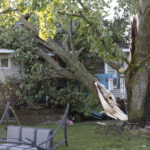In July, an astute observer was driving in Mountain View, Calif., when he came across a multiple car fender-bender. A Toyota Prius had hit a Prius, and that Prius hit an Accord, which hit an Accord, which hit a Prius.
Being astute, this observer recognized one of the cars and snapped a picture with his cell phone. He then sent the picture to Jalopnik, an automobile blog, where he or she remained anonymous.
The reason the photograph was notable?
It was of Google’s Robot Prius, Google’s self-driving automobile. Hence, the picture was thought to be a piece of history: the first public crash of an autonomous, robot car.
Google, which has been secretive about the car, later said that the car was not being driven in autonomous mode when the accident occurred, that an employee was driving, and then said nothing more. But the irony was clear.
Google has presented the car as super safe. Google says the car, which drives by computer, GPS, and a complicated system of laser and imaging systems, does away with human error. It has said the car could cut automobile fatalities in half. Sebastian Thrun, the Stanford University computer science professor, and the chief researcher behind the car at Google, has called the control system on the car “the perfect driving mechanism.”
Prior to this, Google said it had driven the car hundreds of thousands of miles, under autonomous control, without incident. The car had been driven from the San Francisco Bay Area down scenic and sinuous Highway 1 to Los Angeles, about 300 miles. It had gone on the winding, often traffic clogged, roads around Lake Tahoe. One Google engineer reportedly drove one of the cars on his daily commute from Berkeley to Mountain View, a distance of about 50 miles.
With that impressive safety record, Google was able to convince Nevada elected officials to pass a law making the Google car legal. The law directs the Nevada Department of Transportation to create regulations to govern use of the car and to designate the areas where it can be tested.
Nevada authorities were swayed by arguments that by being the first, the state would get the economic development associated with the cars. There was talk of a future in which autonomous taxi cabs would ride up and down the Las Vegas Strip, more safely and with greater fuel efficiency.
Google officials recently traveled to Nevada to meet with Department of Transportation officials to confer on the developing regulations.
So what will robot cars mean for automobile insurance? Nobody knows for sure..
“We’re interested in it,” said Dick Luedke, State Farm spokesperson. “We’re following it. But it is a little hard to talk about something that doesn’t exist.”
Currently, the cars — Google supposedly has six, autonomous Priuses and one autonomous Audi — are legal to drive because a person sits in the driver seat to take control should something go awry. Law enforcement officials have said that as long as someone is ready to take over, the system is not legally different from cruise control. Others have noted, however, that the cars really are out in front of the law at present.
But Google, Thrun and some others remain convinced that it is just a matter of time before autonomous cars rule the road. They say cars will move faster and with greater efficiency, and that more cars will be able to be on the road, traveling more closely together, because the machines can respond more quickly than human drivers. They say there will be no more distracted driving and no more drunk driving problems.
Thrun has proposed that there will be car sharing programs, where someone can just go out the door and get in the car that is waiting. Someone else will pick it up wherever it is left.
To Insurance Journal‘s request for more information, or for an interview, Google spokesperson Jay Nancarrow responded only with: “Thanks for your inquiry. I’m not going to be able to provide guidance for you at this time, but I will keep you in mind when we are at a better point to discuss details.”
Kirn is a freelance writer based in Sacramento, Calif.
Topics Auto Personal Auto Google
Was this article valuable?
Here are more articles you may enjoy.


 One of Highest Property Claims Severity Recorded in Q3 on Low Volume, Says Verisk
One of Highest Property Claims Severity Recorded in Q3 on Low Volume, Says Verisk  Fifth La Niña in Six Years to Disrupt Crops and Supply Chains
Fifth La Niña in Six Years to Disrupt Crops and Supply Chains  Death at Universal’s Orlando Resort Roller Coaster Ruled Accidental
Death at Universal’s Orlando Resort Roller Coaster Ruled Accidental  Florida Jury Returns $779M Verdict for Family of Security Guard Killed at Gambling Cafe
Florida Jury Returns $779M Verdict for Family of Security Guard Killed at Gambling Cafe 


